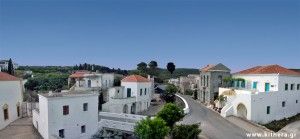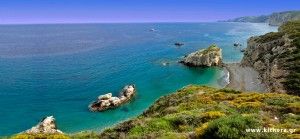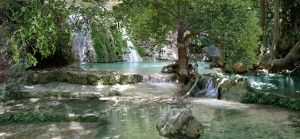The monuments in Kythira bear witness to the course of the island from the past to the present day, discover the myths, confirm the history and make us look the future through the knowledge they provide us.
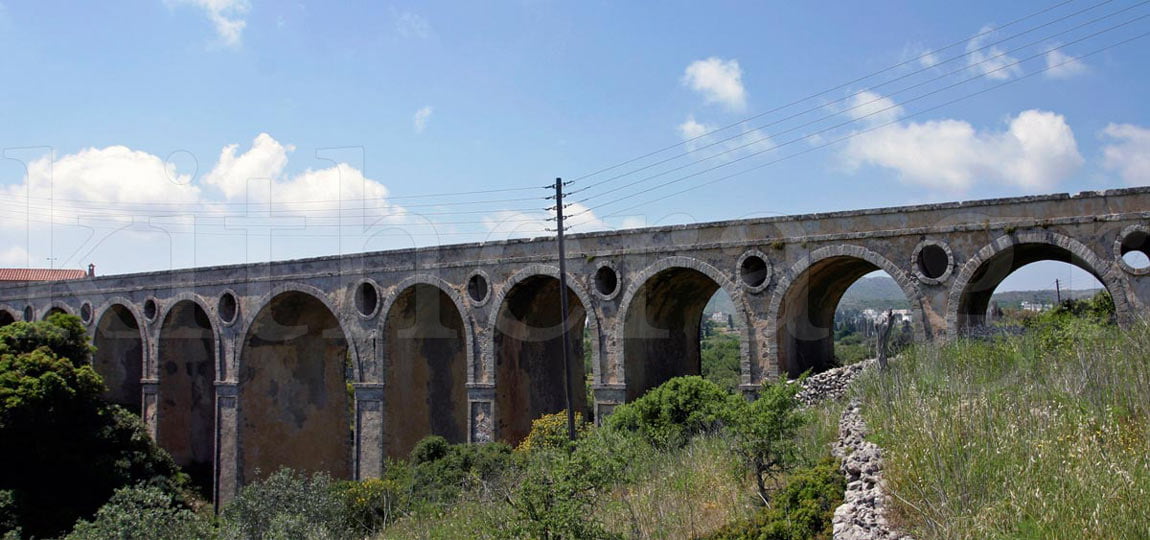
Katouni in Kato Livadi, the largest stone bridge in Greece.
The historical monuments of Kythira
In the summer of 2011 a large fire in the Paliokastro area revealed the ruins of an ancient wall that was covered by dense vegetation. This is an important element that enriches the creation of the island’s identity.
Equally important are the excavations at Agios Giorgis on the mountain in the area of Avlemonas where, after the excavations of the last few years, the Minoan sanctuary was discovered with significant findings showing the island’s relations with the Cretan civilization.
In the center of the island, the ruins of the large Byzantine castle of Paleochora or Agios Dimitrios, as it was called at the time, resemble a miniature of Mystras built on a steep slope that protected her from hostile attacks combined with strong walls, which are still present. As well as many Byzantine churches, such as the church of Agia Varvara, an excellent sample of Monembassian architecture and high aesthetics with ideal proportions.
In the southernmost part of the island, at the top of a steep cliff, the Castle of Chora has panoramic views of three seas, Myrtoo, Cretan and Ionian. It was built by the Venetians in many periods from the 13th century and thereafter most of them in 1503. Inside, among others, there is a large water tank with domes and arches, two-storey mansion houses, the administration now houses the Historical Archive Kythira, the church of Myrtidiotissa of the 16th century. Outside the fortress there is a second castrail to the north that encloses the Inner Bourgeois with many churches and houses.
To the west of the island, in the settlement of Mylopotamos Kato Chora is the Venetian Castle of the Kato . It was built in 1565 because of its strategic location and for the protection of the peasants from the pirates. Inside it numbered many houses and churches and inhabited until the 1950s. Some of them are preserved today, some in good condition, which gives many visitors a feeling of transportation in the past. Inside the castle there are 9 churches of exceptional architecture that belong to the 16th – 17th century and are Panagia Mesosporitissa, Prophet Elias, Saint Athanassios, Saint John Theologos, Agii Anargyri, Agios Nikolaos, Agii Pantes, Agios John Prodromos, and Saint Demetrius. The sunset from the west side of the castle is considered to be the most beautiful of Kythera overlooking the Ionian Sea.
The Avlemona’s castle is a Venetian fortress located on the west of the island and is built by the seafront next to Avlemonas at the entrance of the harbor. It was built east of the island to control its side to the Aegean Sea. The castel has an inner perimeter runway with 14 arcs. In the restoration work that took place a few years ago, 11 of them were assembled and fixed.
The Mudariou lighthouse is located at the northern end of Kythera at Cape Spathi. It was built in 1857 by the English and is one of the largest in Greece with a height of 25 meters. The view from the lighthouse is wonderful, with the Peloponnese spreading panoramic and magnificent. The access is made from Platia Ammos and the last part of the route, about 400 meters long, is a path.
In the village of Livadi, Kato Livadi, there is the Katouni which is the largest stone bridge in Greece and was built during the British domination. There is also the excellent collection of the Museum of Byzantine frescoes, the entrance is free.
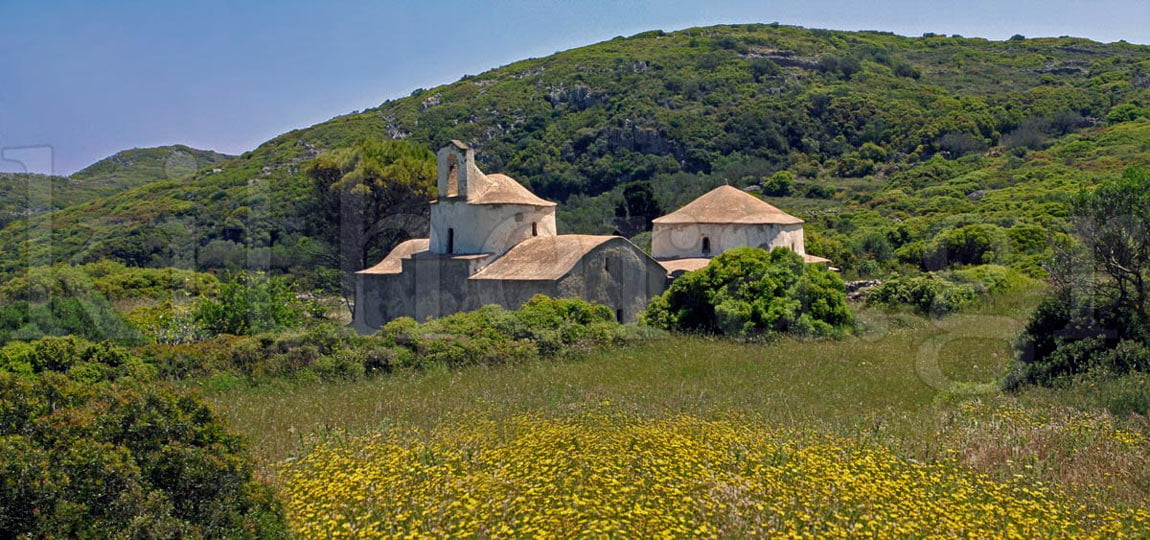
Agios Dimitrios, the 13th century Byzantine church.
Monasteries and Byzantine churches
The Agia Moni Monastery is located on the west and central of the island and is built on the top of the mountain, offering panoramic views of Myrtoo breathtaking sea. The temple of the Monastery is dedicated to the Virgin Mary and was built in 1840 with the help of Theodoros Kolokotronis, who had a class in the Virgin Mary that if the revolution of 1821 against the Turks was defeated, he would return to the island and help rebuild the temple, celebrating the Savior on August 6th.
The Myrtidiotissa Monastery is located to the east of the island and is built near the sea in a pine-covered area. It is the spiritual center of Kythira and its temple is dedicated to the Virgin Mary Myrtidiotissa, which you consider the protector of Kythira. The picture was found by a shepherd in the 13th century in the Myrtidas area, which was so called by the many myrtle trees that the region has. In the position of finding the image the poor shepherd built a small chapel and in his care he devoted the rest of his life.
After the death of the pious shepherd, the monastery of Leontios, the monk Leontios, took care of the small church of Myrtidiotissa, who, with the financial help of Kytherians, grew a little the original chapel and built around it some cells for the pilgrimage of the pilgrims. But the multitude of pilgrims from different places created the need for a larger temple, and so began the construction of the present temple.
The Agia Elea Monastery Located south of Kythira, it is built on the top of the mountain, at the point where Saint Elena was martyred by her father in 375 AD who did not accept her faith. The temple was built in 1871 and the memory of St. Heles is celebrated on August 1st. The panoramic view from the monastery is unique, giving the visitor a sense of flying over Kythira.
The little church Agios Dimitrios is located in the south of the island near the village of Purko. It is one of the most important Byzantine churches in Kythira. It is an outstanding work of art of genius architectural inspiration, with originality in composition and harmony in the rhythm.
View in detail all monuments in Kythira with a lot of photos, and specific information for each monument separately.
This post is also available in:
 Ελληνικα (Greek)
Ελληνικα (Greek)



